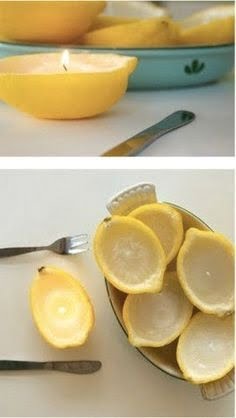Candle making is a popular hobby and even a lucrative business for many enthusiasts. Whether you’re a seasoned candle maker or just starting out, choosing the right equipment is crucial for achieving the best results. When it comes to selecting the material for your candle making equipment, stainless steel and aluminum are two popular options worth considering.
Using either stainless steel or aluminum for candle making has its own set of benefits and advantages. Stainless steel is known for its durability and resistance to corrosion, while aluminum is valued for its lightweight and excellent heat conductivity. Both materials have their own unique properties that can play a significant role in the candle making process.
In this article, we will explore the benefits of using stainless steel for candle making, as well as the advantages of using aluminum. We will also compare these two materials to help you determine which one is best suited to your specific candle making needs.
Additionally, we will provide best practices for using both stainless steel and aluminum equipment, as well as tips for maintaining each type of material to extend their lifespan and ensure consistent quality in your candle production. Whether you’re a hobbyist or a professional, choosing the right material for your candle making equipment is an important decision that can greatly impact the outcome of your craft.
Benefits of Using Stainless Steel for Candle Making
Stainless steel is a popular choice for candle making equipment due to its numerous benefits. Here are some of the advantages of using stainless steel for candle making:
Durability
Stainless steel is known for its durability and longevity, making it an ideal material for candle making equipment. It can withstand high temperatures and frequent use without warping or corroding, ensuring that your candle making tools remain in top condition for years to come.
Resistance to Corrosion
One of the key benefits of using stainless steel for candle making is its resistance to corrosion. This makes it easy to clean and maintain, as it is less likely to rust or tarnish compared to other materials. Additionally, the non-porous nature of stainless steel prevents it from absorbing any odors or contaminants that may affect the quality of your candles.
Hygienic Properties
Stainless steel is naturally hygienic and non-reactive, which is crucial for candle making where hygiene and purity are essential. This material is easy to sanitize and sterilize, ensuring that your candle making equipment remains clean and free from bacteria or other contaminants that could compromise the quality of your candles.
Advantages of Using Aluminum for Candle Making
Aluminum is a popular choice for candle making equipment due to its numerous advantages. When it comes to crafting high-quality candles, using aluminum can offer several benefits that make it an attractive option for manufacturers.
Excellent Heat Conduction
One of the major advantages of using aluminum for candle making is its excellent heat conduction properties. This allows for even and efficient heat distribution, ensuring that the wax melts at a consistent rate. As a result, candles are more likely to have a smooth and even finish, reducing the risk of uneven burning.
Lightweight and Durable
Aluminum is known for being lightweight yet durable, making it easy to handle during the candle making process. Its resistance to corrosion also means that aluminum equipment can withstand exposure to wax, fragrance oils, and other candle-making ingredients without degrading or rusting over time.
Cost-Effective Option
In addition to its performance benefits, aluminum is often a cost-effective option for candle makers. Compared to stainless steel or other materials, aluminum equipment may be more affordable while still delivering reliable results. This makes it an appealing choice for both hobbyists and commercial candle manufacturers looking to maximize their budget without sacrificing quality.
Comparison of Stainless Steel and Aluminum for Candle Making
When it comes to candle making, the choice of material for your equipment can significantly impact the quality of your finished products. Two popular options for candle making equipment are stainless steel and aluminum. Each material has its own set of benefits and advantages, so it’s important to carefully consider which one is best suited for your needs.
Stainless steel candle making equipment offers several advantages that make it a popular choice among candle makers. Firstly, stainless steel is highly durable and resistant to corrosion, making it a long-lasting investment for your candle making endeavors.
Additionally, stainless steel is non-reactive, which means it won’t interact with the materials used in candle making, ensuring the purity of your final product. The smooth surface of stainless steel also makes it easy to clean, maintaining a high level of hygiene in your workspace.
On the other hand, aluminum also has its own set of advantages when it comes to candle making. Aluminum is a lightweight material that offers excellent heat conductivity, allowing for even distribution of heat during the melting and pouring process. This can result in consistent and well-crafted candles. Additionally, aluminum is known for its affordability and cost-effectiveness, making it an attractive option for those looking to start or expand their candle making business without breaking the bank.
Ultimately, the choice between using stainless steel or aluminum for candle making equipment will depend on your specific needs and preferences as a candle maker.
| Material | Advantages |
|---|---|
| Stainless Steel | Durable, non-reactive, easy to clean |
| Aluminum | Lightweight, excellent heat conductivity, affordable |
Best Practices for Candle Making With Stainless Steel
Stainless steel has become a popular choice for candle making equipment due to its durability and corrosion resistance. When it comes to the best practices for candle making with stainless steel, there are a few key factors to consider.
Firstly, it is important to ensure that your stainless steel equipment is properly cleaned and sanitized before each use. This will help prevent any contamination of your candle wax and ensure a high-quality finished product. Additionally, it is recommended to use high-grade stainless steel specifically designed for candle making to avoid any potential reactions with the wax.
Another best practice for candle making with stainless steel is to maintain proper temperature control. Stainless steel is known for its excellent heat distribution, so it is crucial to monitor and adjust the temperature throughout the melting and pouring process to achieve optimal results.
Lastly, proper care and maintenance of your stainless steel equipment are essential for longevity. Regularly clean and inspect your equipment for any signs of wear or damage, and address any issues promptly to avoid compromising the quality of your candles.
To sum up, using stainless steel for candle making offers many benefits such as durability, heat distribution, and resistance to corrosion. By following these best practices, you can optimize your candle making process and ensure consistent high-quality results.
| Best Practices | Stainless Steel Candle Making |
|---|---|
| Cleanliness | Properly clean and sanitize equipment before each use |
| Temperature Control | Monitor and adjust temperature throughout the process |
| Maintenance | Regularly clean and inspect equipment for wear or damage |
Best Practices for Candle Making With Aluminum
When it comes to candle making, the choice of material for your equipment can greatly impact the quality of your final product. Aluminum is an excellent option for candle making due to its unique properties and benefits. Below are some best practices for candle making with aluminum:
- Use high-quality aluminum molds and containers: When selecting aluminum molds or containers for candle making, it’s essential to choose high-quality options that are durable and heat-resistant. This will ensure that your equipment maintains its shape and performs well over time.
- Proper heating and cooling: When working with aluminum equipment, it’s important to heat the material evenly to prevent hot spots and ensure that the wax melts uniformly. Additionally, allowing the candles to cool slowly in the aluminum molds can help prevent cracking or warping.
- Regular cleaning and maintenance: To keep your aluminum candle making equipment in optimal condition, it’s crucial to clean it regularly after each use. Use a mild detergent and warm water to remove any leftover wax or residue, and be sure to dry thoroughly before storing.
Overall, when following these best practices for candle making with aluminum, you can create beautiful and high-quality candles while ensuring the longevity of your equipment. With proper care and attention, your aluminum candle making tools can serve you well for many batches of candles to come.
Tips for Maintaining Stainless Steel Candle Making Equipment
When it comes to maintaining stainless steel equipment for candle making, there are a few key tips to keep in mind in order to ensure the longevity and effectiveness of your tools. One important tip is to regularly clean and sanitize your stainless steel equipment after each use.
This will help prevent any residue or leftover wax from building up and potentially affecting the quality of your candles. Additionally, using a gentle cleaner specifically designed for stainless steel will help to preserve the material and prevent any corrosion or damage.
Another important aspect of maintaining stainless steel candle making equipment is to inspect for any signs of wear and tear on a regular basis. This includes checking for any dents, scratches, or discoloration that may affect the performance of the equipment. It’s also important to regularly tighten any loose fittings and components to ensure that everything is secure and functioning properly.
In addition, storing your stainless steel candle making equipment properly is crucial for maintaining its quality. Keep it in a dry environment with adequate ventilation to prevent moisture build-up, which can lead to rust and deterioration. By following these maintenance tips, you can ensure that your stainless steel candle making equipment remains in optimal condition for years to come.
Tips for Maintaining Aluminum Candle Making Equipment
When it comes to maintaining aluminum candle making equipment, there are a few key tips to keep in mind. Proper maintenance of your equipment can help prolong its lifespan and ensure that your candle making process runs smoothly. Here are some tips for maintaining aluminum candle making equipment:
- Regular Cleaning: It’s important to regularly clean your aluminum candle making equipment to prevent the buildup of wax and other residue. Use a mild detergent and warm water to clean the equipment, being sure to thoroughly dry it afterwards to prevent corrosion.
- Avoid Harsh Chemicals: When cleaning aluminum equipment, avoid using harsh chemicals or abrasive materials that could damage the surface of the metal. Stick to gentle cleaning solutions and non-abrasive cloths or sponges.
- Check for Damage: Regularly inspect your aluminum equipment for any signs of damage, such as dents, scratches, or corrosion. Address any issues promptly to prevent them from worsening over time.
Proper maintenance of your aluminum candle making equipment is essential for ensuring the quality of your candles and the longevity of your tools. By following these tips, you can keep your equipment in top condition for years to come.
Remember that proper maintenance is crucial for preserving the quality and functionality of your aluminum candle making equipment. With regular cleaning and careful inspection, you can ensure that your equipment remains in optimal condition for all of your candle making endeavors.
Conclusion
In conclusion, when it comes to choosing the right material for your candle making needs, both stainless steel and aluminum offer their own unique advantages. Stainless steel is known for its durability, resistance to corrosion, and ease of cleaning, making it a great choice for long-term use in candle making equipment.
On the other hand, aluminum is lightweight, conducts heat well, and is often more affordable than stainless steel, which may make it a suitable option for beginners or those on a budget.
Ultimately, the decision between stainless steel and aluminum for your candle making equipment will depend on your specific needs and priorities. If you prioritize durability and longevity, stainless steel may be the best choice for you. However, if affordability and lightweight options are what you’re looking for, then aluminum could be the better fit.
Regardless of the material you choose, it’s important to practice proper maintenance to ensure the longevity of your candle making equipment. Regular cleaning and upkeep will not only extend the lifespan of your tools but also ensure the quality and safety of your candle products. Whether you opt for stainless steel or aluminum, taking care of your equipment will ultimately contribute to the success of your candle making endeavors.
Frequently Asked Questions
Is Aluminum Safe for Candle Making?
Aluminum is generally considered safe for candle making. However, it’s important to use caution when melting wax in aluminum containers as they can conduct heat quickly and may cause burns if not handled carefully.
Can You Make Candles in Stainless Steel?
Yes, stainless steel can be used for candle making. It is a durable and heat-resistant material, making it suitable for melting wax and creating candles. Just be sure to use the appropriate equipment to handle hot materials safely.
What Is the Introduction of Candle Making?
Candle making is the process of creating candles by melting wax, adding fragrance or color if desired, and then pouring the liquid wax into molds with wicks. Once the wax solidifies, it forms the shape of a candle that can be burned for light or ambiance.

Welcome to my candle making blog! In this blog, I will be sharing my tips and tricks for making candles. I will also be sharing some of my favorite recipes.





